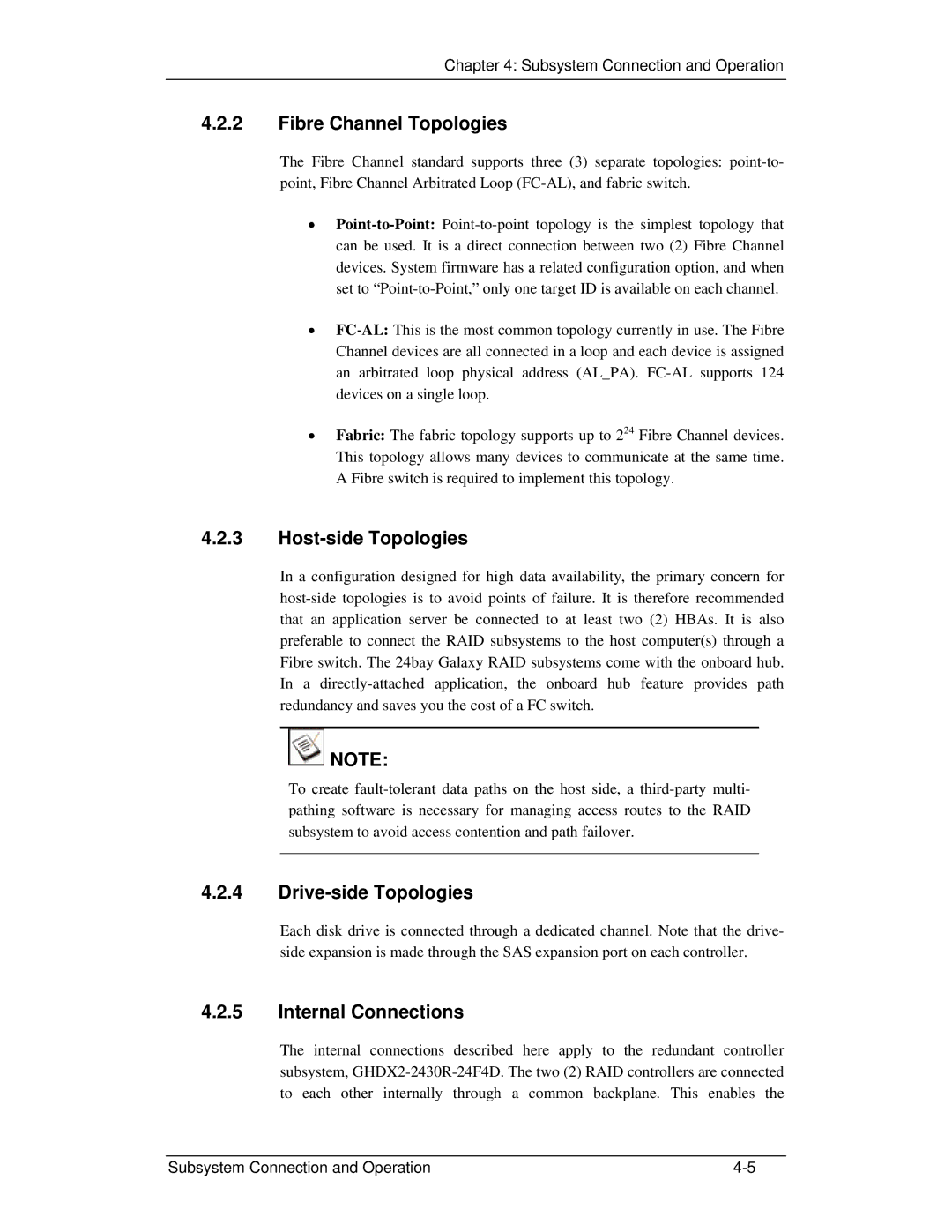Chapter 4: Subsystem Connection and Operation
4.2.2Fibre Channel Topologies
The Fibre Channel standard supports three (3) separate topologies: point-to- point, Fibre Channel Arbitrated Loop (FC-AL), and fabric switch.
•Point-to-Point:Point-to-point topology is the simplest topology that can be used. It is a direct connection between two (2) Fibre Channel devices. System firmware has a related configuration option, and when set to “Point-to-Point,” only one target ID is available on each channel.
•FC-AL:This is the most common topology currently in use. The Fibre Channel devices are all connected in a loop and each device is assigned an arbitrated loop physical address (AL_PA). FC-AL supports 124 devices on a single loop.
•Fabric: The fabric topology supports up to 224 Fibre Channel devices. This topology allows many devices to communicate at the same time. A Fibre switch is required to implement this topology.
4.2.3Host-side Topologies
In a configuration designed for high data availability, the primary concern for host-side topologies is to avoid points of failure. It is therefore recommended that an application server be connected to at least two (2) HBAs. It is also preferable to connect the RAID subsystems to the host computer(s) through a Fibre switch. The 24bay Galaxy RAID subsystems come with the onboard hub. In a directly-attached application, the onboard hub feature provides path redundancy and saves you the cost of a FC switch.
 NOTE:
NOTE:
To create fault-tolerant data paths on the host side, a third-party multi- pathing software is necessary for managing access routes to the RAID subsystem to avoid access contention and path failover.
4.2.4Drive-side Topologies
Each disk drive is connected through a dedicated channel. Note that the drive- side expansion is made through the SAS expansion port on each controller.
4.2.5Internal Connections
The internal connections described here apply to the redundant controller subsystem, GHDX2-2430R-24F4D. The two (2) RAID controllers are connected to each other internally through a common backplane. This enables the

![]() NOTE:
NOTE: